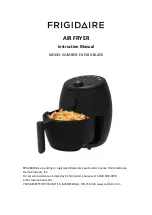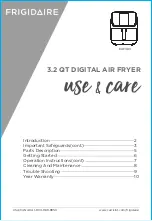
7
SECTION III
INSTALLATION REQUIREMENTS
Installation
should be
performed by competent technicians in accordance with local and state codes. In the
absence of these codes, installation
must conform
to applicable AMERICAN NATIONAL STANDARDS:
ANSI Z223.1-LATEST EDITION National Fuel Gas Code
and/or
ANSI/NFPA No. 70-LATEST EDITION National Electrical Code
A. ENCLOSURE, AIR SUPPLY, and EXHAUST REQUIREMENTS
NOTE:
The following information is very brief and general. For detailed description, refer to the
ML-190 Installation Manual (
ADC
P/N 113070).
Bulkheads and partitions around the dryer
should be
made of noncombustible materials. Allowances
should be
made for the opening and closing of the control door and lint drawer. Also, allowances
should be
made in the
rear for ease of maintenance. (Refer to appropriate Installation Manual for recommended distances and minimum
allowances required.)
When the dryer is operating, it draws in room air, heats it, passes this air through the tumbler (basket), and
exhausts it out of the building. Therefore, the room air
must be
continually replenished from the outdoors. If the
make-up air is inadequate, drying time and drying efficiency will be adversely affected. Ignition problems and sail
switch fluttering problems on gas dryers may result, and you also could have premature motor failure from
overheating. The air supply
must be
given careful consideration to insure proper performance of each dryer.
IMPORTANT:
Make-up air
must be
provided from a source free of dry cleaning fumes. Make-up
air that is contaminated by dry cleaning fumes will result in irreparable damage to
motors and other dryer components.
Exhaust duct work
should be
designed and installed by a competent technician. Improperly sized duct work will
create excessive back pressure which will result in slow drying, increased use of energy, and shut down of the
burner by the airflow (sail) switch, burner hi-limit or lint chamber hi-heat protector thermostat. (Refer to appropriate
Installation Manual for more details.)
CAUTION: IMPROPERLY SIZED or INSTALLED EXHAUST DUCT WORK CAN
CREATE A POTENTIAL FIRE HAZARD.
B. ELECTRICAL and GAS REQUIREMENTS
It is your responsibility to have
ALL
electrical connections made by a properly licensed and competent
electrician to assure that the electrical installation is adequate and conforms with local and state regulations or
codes. In the absence of such codes,
ALL
electrical connections, material, and workmanship
must conform
to
the applicable requirements of the National Electrical Code ANSI/NFPA No. 70-LATEST EDITION.












































